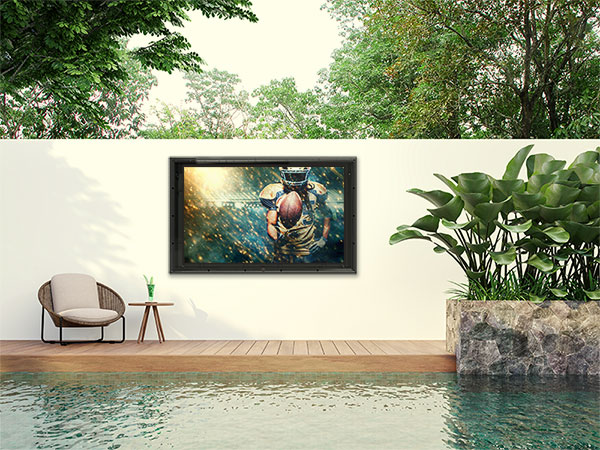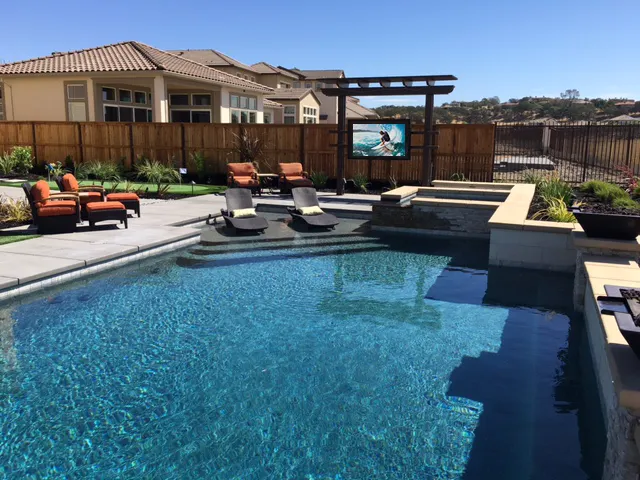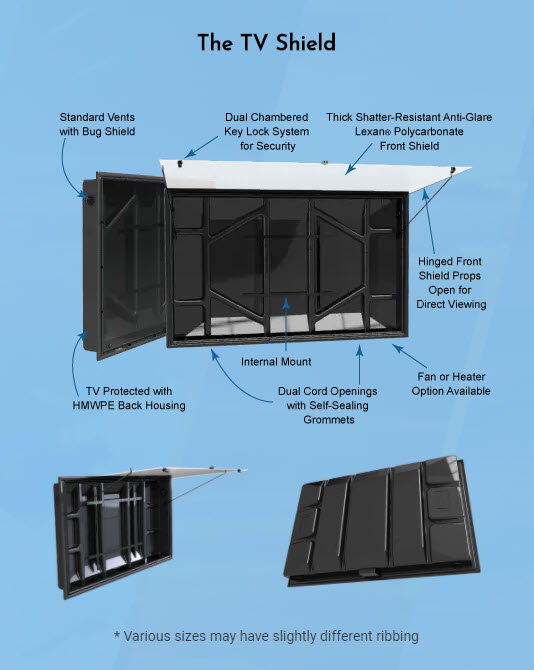How Do You Protect TVs from Humidity Outdoors?
29th Nov 2022
Placing a TV outside has benefits and drawbacks. Increasing outdoor entertainment options is undoubtedly one of the main advantages. However, when you put a TV outside, you have to deal with environmental challenges that indoor devices are not made to withstand. It is never recommended to place an indoor TV outside, unless it is fully protected by an enclosure. While condensation on your TV screen might seriously bother you by changing the image, it can also get into your TV and result in more serious issues. Whether you have an indoor or outdoor TV, it's likely that you want to safeguard your investment and maintain the best possible condition for your TV.
Article Table of Context
- How Humidity Can Damage Your TV
- Protecting a TV Outside
- TV Covers
- Protective Enclosure
- Buy an Outdoor TV
- Sunroom
- What is The Recommended Storage Temperature for a Television?
- Do Outdoor TVs Need to Be Covered?
- Do Weatherproof TV Slip Covers Work for Humidity?
- Protect Your TV from Humidity with The TV Shield Today

How Humidity Can Damage Your TV
When exposed to moisture or condensation, electronics rarely perform well. A TV could be harmed wherever dew, heat, or humidity are present. There are very small, trace amounts of moisture in your home, so your typical TV does not account for it. Even if you rarely notice moisture in the air around you when you're outside, your TV might be subjected to more liquid than it was made to withstand.
Condensation is a threat from high humidity. The outside of a glass of cold water gets wet on a hot summer day because of condensation, which is when moisture gathers as a liquid on a surface next to humid air. When used, all electronics produce heat so without added temperature regulation, there can often be increased condensation. Any situation that results in condensation can harm electronic parts and generate electrical shorts.

Protecting a TV Outside
We have compiled this extensive list of suggestions in order to assist you in maintaining the quality of your television set outdoors. You won't spend a fortune on these precautions, but they will help you save money in the long run by reducing the need for frequent repairs or the need to replace TVs often. Some of these solutions are also useful ways to protect smart or expensive TVs or electronics outdoors. If you are concerned about subjecting your television to the elements of the outside world, following these procedures will be of great use to you.
Now, without further ado, let's have a conversation on how to keep an outdoor TV in working order!
TV Covers
Among the options, a soft TV cover is possibly the least expensive. You can buy a covering to cover your TV when it's not in use. These products are composed of a tough fabric material (often water-resistant), much like a grill cover or motorcycle cover. The strength of the cover's protection, however, depends on two factors. The cover may not completely enclose an outdoor TV depending on how it is attached. For instance, the cover won't be able to completely surround the back if it is flush-mounted to the wall.
A probable leak zone is indicated by an open back. Furthermore, if your cover cannot completely seal, moisture may slip in. For instance, leaving the bottom of the TV covered like a grill may allow moisture to enter via this opening. Your covering should completely encircle and seal your TV to prevent moisture infiltration. Working with soft covers could also be challenging. The majority of TVs are positioned at least a little above our heads. So, it is wise to also take into consideration if the soft cover slides over the TV's top which means it will need to be removed each time the TV is in use. Some materials used for outdoor TV covers are not actually water-resistant either, so make sure to understand the type of materials. Additionally, keep in mind these types of covers don’t offer impact resistance from flying objects such as thrown footballs or debris during storms. These covers also don’t offer ventilation and air circulation. Ventilation and air flow keep the TV in the best operating condition.
Protective Enclosure
You can also purchase an outdoor enclosure for your TV if you are not quite as handy with Do-It-Yourself (DIY) projects. Protective TV enclosures, such as The TV Shield, provide a quick fix that is more protective than a softcover and more affordable than buying an outdoor TV or building a sunroom into your house. One thing you should take into account is the possibility of heat buildup when the enclosure's doors are shut. However, many TV enclosures include vents and can have fans that enable complete air circulation around the TV. High-quality indoor and outdoor TV enclosures like The TV Shield are robust, shatterproof, weatherproof, and truly durable.
Buy an Outdoor TV
Outside TVs can cost a fortune but are made to withstand all kinds of outdoor problems. However, a lot of features, including the TVs' indefinite resistance to the elements, are included for that price. The main problems with modern outdoor versions are that either the weatherproofing does not work as promised, the price is high but the quality is not reliable, or the picture quality is inferior to that of an indoor TV.
If you decide to spend money on an outdoor TV, it is advised that you give the location serious thought. The TV should still be protected from harsh weather and sunlight as much as possible. It may be worth considering even pairing an outdoor TV with an outdoor TV enclosure to truly enjoy TV outside with peace of mind.
Sunroom
As you can see by now, keeping a TV outdoors in working order is not a complex undertaking. An outdoor TV enclosure is an especially easy solution. In the long term, investing in a few minor parts will pay off because your television will remain secure and damage-proof.
If you opt to place a TV in a sunroom, that is an option. As long as the environment is dry with even temperatures and there are no bugs, most TVs will do just fine. There is no substitute for routine upkeep and cleaning to keep it in good shape. Additionally, if there is outdoor exposure where a TV is placed, you can consider positioning the TV in a shaded place and making sure it has a weatherproof wall mount and power outlet. The added peace of mind of a weatherproof TV cabinet is hard to beat if the sunroom has exposure to outdoor elements.
What is The Recommended Storage Temperature for a Television?
Various televisions will have their recommended storage temperatures written in the fine print of each manual. Make sure you pay attention to this. When it comes to TV enclosures, they are known to be able to withstand harsh climates, however once again be sure to pay attention to the fine print. Even certain outdoor TVs that are advertised as outdoor TVs may in reality only withstand mild temperatures which is usually specified in fine print disclosures on the bottom of product pages or in manuals.
Do Outdoor TVs Need to Be Covered?
As you can see by now, keeping an outdoor TV in working order is not a difficult undertaking, especially if the TV is in a quality outdoor TV enclosure. In the long term, investing in a few minor parts will pay off because the television will remain secure and damage-proof.
There is no substitute for routine upkeep and cleaning. In most scenarios, it is important to utilize an enclosure or cover. Additionally, you can consider positioning the TV in a shaded place and making sure it has a weatherproof wall mount and power outlet. Once your pricey TV is secure, even outside, you can relax knowing that it is.

Do Weatherproof TV Slip Covers Work for Humidity?
Typically fabric covers do not offer true humidity regulation. Whilst a waterproof slipcover could work well for protection against drizzle, there is still room for condensation to take place. An outdoor TV cabinet offers circulation and better humidity control.
Protect Your TV from Humidity with The TV Shield Today
With this comprehensive overview of outdoor TVs and TV cabinets for outdoors under your belt, you are now ready to navigate the waters to find the perfect TV cabinet for you. If you have further questions or inquiries, feel free to contact us today!
Ready to Grab The TV Shield?



